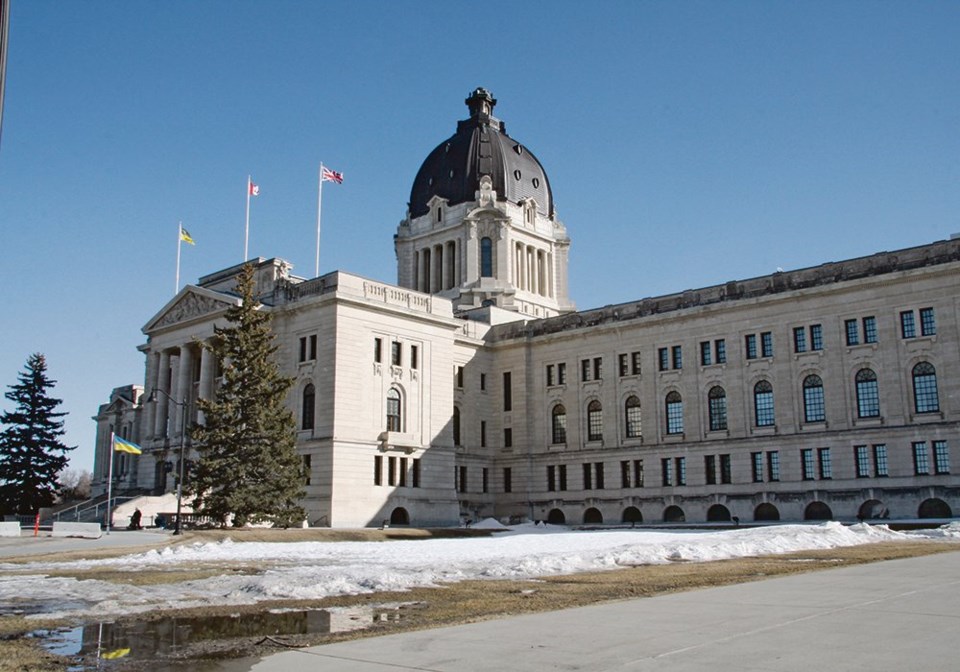REGINA — Agricultural stakeholders said they were happy with the Saskatchewan budget released March 23.
But what they really want is rain after the widespread and devastating drought last year.
Projected spending within the ministry is up considerably due mainly to a $70-million increase in crop insurance premium costs.
Total spending is estimated at $462.4 million, up from $387 million last year.
Business risk management costs are always the largest chunk of the estimates, and this year total $338.5 million. That includes $220 million for crop insurance premiums, $24.7 million for AgriStability and $39.8 million for AgriInvest contributions. There are also delivery costs.
Agriculture minister David Marit said the amount allocated for AgriStability, which is down just slightly from 2021-22, is a rolling target since governments agreed to remove the reference margin limit from the program.
“We don’t know what kind of uptake we’re going to get,” he said.
About 50 percent of producers are enrolled in the program.
The Agricultural Producers Association of Saskatchewan said it appreciates the government programs.
“Producers are coming off of a historic drought and heading into one of the most unpredictable years on record,” said president Ian Boxall. “It’s important for the provincial government to support producers in case another drought is on the way this summer.”
Will Lowe from the Saskatchewan Cattle Feeders Association said the industry wasn’t expecting any big surprises.
“We’re just glad we’re not seeing any reductions and crop insurance prices are up. Hopefully, we have a better year. Rain would solve a lot of the issues we’ve seen over the last year,” he said.
Saskatchewan Stock Growers Association president Kelcy Elford said the drought took a toll on cattle producers and additional supports for mental health are welcome.
Elford said the previously announced enhancements to forage programs under crop insurance are also an important tool for producers.
He and Lowe thanked governments for the drought recovery initiative launched last year in addition to existing programs.
Saskatchewan Association of Rural Municipalities president Ray Orb said he was happy with more money for paramedics and EMTs in rural areas, although further details are required.
Money for rural roads and bridges held steady year over year. Orb said that is disappointing but sometimes it depends on federal funding and cost-shared programs.
Orb also had hoped a carbon offset program would be in the budget. Farmers and ranchers contribute to greenhouse gas emissions reductions and need to be rewarded, he said.
“I know there’s a promise that the province will be consulting later this spring so we’re going to be there to make sure that happens,” he said.
Marit said the province is working with the federal government and the private sector on the offset program. The province’s role should be to put regulations in place that allow a program to work and ensures producers are not held liable.
“Let the farmers and ranchers negotiate if it’s a business deal they want to enter into,” he said. “I just want to make sure they’re protected.”
The agriculture budget included a $2 million increase in research funding, all going to the Global Institute for Food Security so it can demonstrate how agriculture is improving the environment.
Funding for Animal Protection Services of Saskatchewan was doubled to $1.6 million as the agency begins the takeover from the Saskatoon SPCA in that city. That should be complete by fall.
The province’s budget includes an enhanced tax rebate on capital expenditures for value-added activity. The Saskatchewan Value-added Agriculture Incentive provides a graduated level of tax credit for investment of $10 million or more in canola crush facilities, potash mines, lumber mills and others.
Recent announcements totaling $13.6 billion worth of investment will qualify for the credit, beginning at 15 percent for a project up to $400 million, 30 percent up to $600 million and 40 percent for projects worth $600 million or more. The maximum credit is $250 million and it is retroactive to 2018.
Finance minister Donna Harpauer said the benefits of 12,000 construction jobs and 9,000 permanent jobs outweigh the tax credits.




